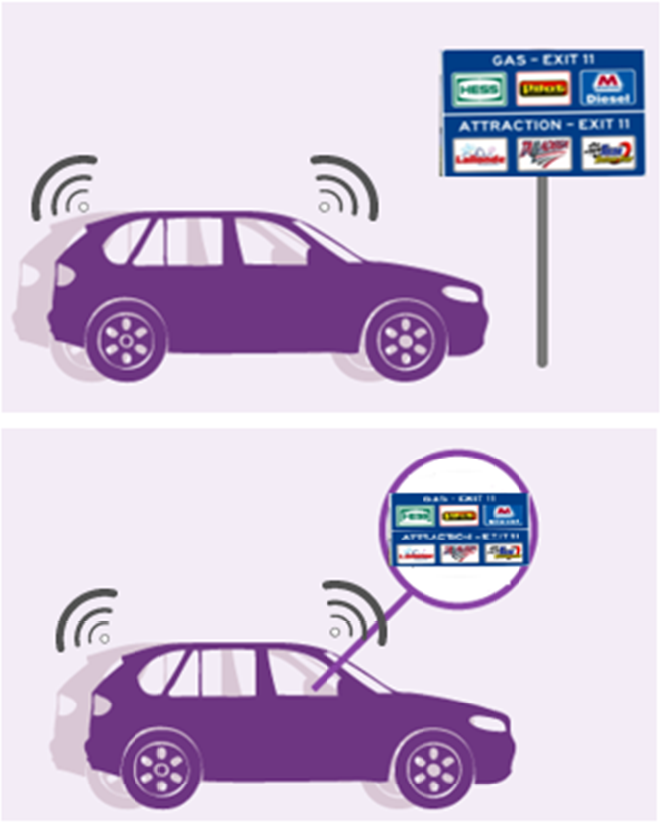Our ResearchGuided by a theory-practice model, our empirical research focus is twofold: (1) to examine fundamental theoretical questions on spatial, selective, and sustained attention that grow from hypotheses about real-world problems in driving and interface design; (2) to apply the understanding of cognitive and neural mechanisms of attention to practical problems such as aging and driving, driver distraction, driver-automation interaction, and information visualization. Our areas of research include:
|
|
Projects
|
Message Delivery in Manual and Automated Driving
As highly automated cars become more prominent, future drivers likely won’t pay as much attention to the road. Supported by a grant from the N.C. Department of Transportation, our lab collaborates with Industrial and Systems Engineering and the Institute for Transportation Research and Education to investigate the future presentation of road signage. This project examines the influence of in-vehicle dynamic message displays of trip-related but non-safety critical information on driver visual behavior and performance, as compared with conventional on-road guide or logo sign use, during manual and highly automated driving. |
|
Pinpoint the Needs of Older Drivers
This projects aims to help older drivers understand what cognitive changes come with age and how do these changes affect driving. Funded by the N.C. Governor’s Highway Safety Program, an NC State Faculty research award, and a scholarship from the Aging Technical Group of the Human Factors and Ergonomics Society, our lab partners with the UNC Highway Safety Research Institute and developmental psychologists to develop programs and countermeasures to reduce the crash risks of older drivers and to improve road safety. Our goal is to identify assessment and training methods for older drivers. That could mean pointing out typical driving situations that pose more risk to an individual experiencing decline in attention. Our Drive Aware Task and Recent Findings Our Recent Findings on Attention Networks and Crash Risks in Specific Situations The Attentional Failure during Driving Questionnaire (AFDQ) [pdf] [excel] |
|
Mind Wandering and Driving Safety
Our minds often leave the present experience and wander around self-generated thoughts and feelings. When the mind wanders, attention drifts away from task-relevant perceptual information, leading to deteriorated performance on the task at hand. This research seeks to understand the environmental and individual factors that influence the experience of mind wandering and its impact of task performance. Our studies found bi-directional interplay between mind wandering and the task at hand. On the one hand, mind wandering affects task performance such as our driving speed fluctuates more when the mind wanders. On the other hand, the task also influences our mind wandering experience. For example, we are more likely to mind wander in a monotonous environment and whether we mind wander in images or an audio book depends on the task. Our Recent Findings on Driving Safety and Mind Wandering Modality |
|
Attention, Hazard Detection and Physiological Markers
It is well known that traffic collisions can easily occur when a driver’s attention is consumed by task irrelevant information (e.g. cellphone, or billboards). It is also possible though that drivers will fail to identify certain hazards or traffic signals because their focus is consumed by other, equally, pertinent events on the road. Our research aims to explore when and why drivers miss critical road hazards, potential physiological markers of hazard detection, and how to mitigate the cognitive distortions. Our Recent Findings on Visual Search and Hazard Detection |
|
